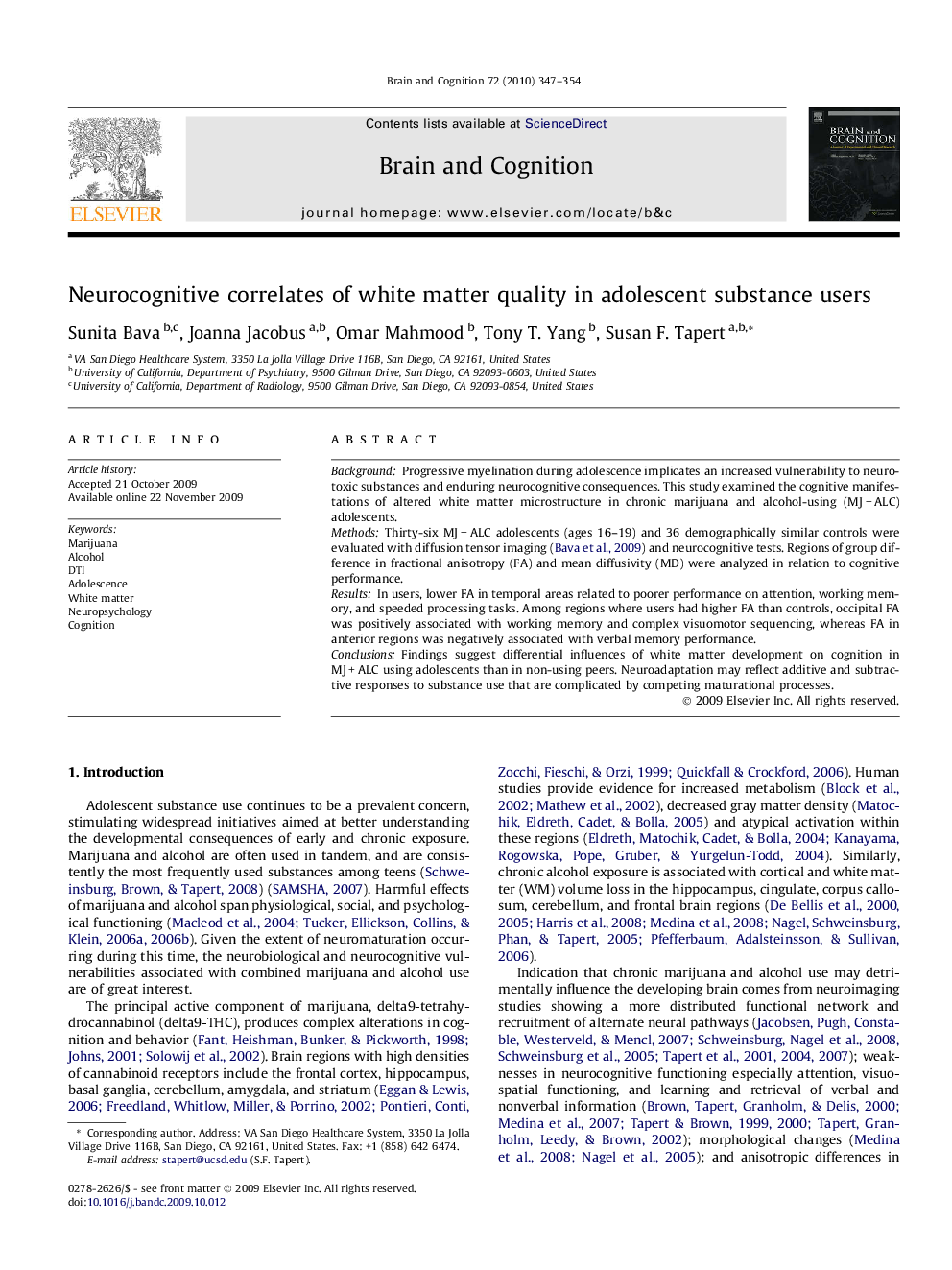| Article ID | Journal | Published Year | Pages | File Type |
|---|---|---|---|---|
| 924620 | Brain and Cognition | 2010 | 8 Pages |
BackgroundProgressive myelination during adolescence implicates an increased vulnerability to neurotoxic substances and enduring neurocognitive consequences. This study examined the cognitive manifestations of altered white matter microstructure in chronic marijuana and alcohol-using (MJ + ALC) adolescents.MethodsThirty-six MJ + ALC adolescents (ages 16–19) and 36 demographically similar controls were evaluated with diffusion tensor imaging (Bava et al., 2009) and neurocognitive tests. Regions of group difference in fractional anisotropy (FA) and mean diffusivity (MD) were analyzed in relation to cognitive performance.ResultsIn users, lower FA in temporal areas related to poorer performance on attention, working memory, and speeded processing tasks. Among regions where users had higher FA than controls, occipital FA was positively associated with working memory and complex visuomotor sequencing, whereas FA in anterior regions was negatively associated with verbal memory performance.ConclusionsFindings suggest differential influences of white matter development on cognition in MJ + ALC using adolescents than in non-using peers. Neuroadaptation may reflect additive and subtractive responses to substance use that are complicated by competing maturational processes.
